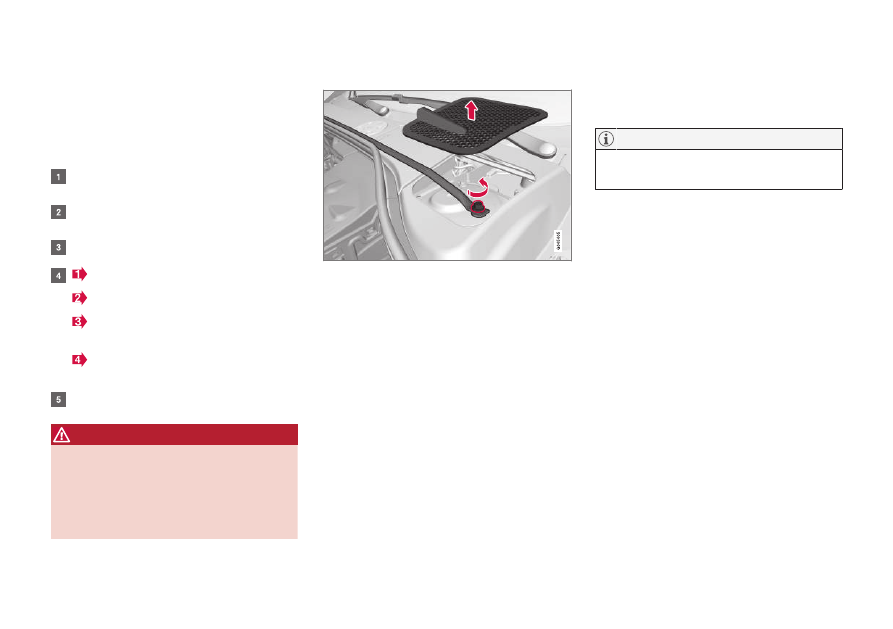Volvo S60 (2018 year). Manual - part 21

||
MAINTENANCE AND SERVICING
* Option/accessory.
348
Removal
Switch off the ignition, remove the remote key
from the ignition slot and wait at least 5 minutes
before disconnecting the battery so that all infor-
mation in the vehicle's electrical system can be
stored in the control modules.
Open the clips on the front cover and remove
the cover.
Release the rubber molding so that the rear
cover is free.
Remove the rear cover by pulling it away.
Detach the black negative cable.
Detach the red positive cable
Detach the ventilation hose from the bat-
tery
Loosen the screw holding the battery
clamp.
Move the battery to the side and lift it up.
WARNING
PROPOSITION 65 WARNING!
Battery posts, terminals, and related accesso-
ries contain lead and lead compounds, chemi-
cals known to the state of California to cause
cancer and reproductive harm. Wash hands
after handling.
Rally bar R-Design models*
Rally bar and bulkhead hatch
Vehicles with the optional R-Design package are
equipped with a rally bar in the engine compart-
ment that must be removed before the battery
can be replaced.
1. Remove the hatch in the bulkhead on both
sides of the engine compartment (pry them
up carefully with a plastic knife or similar
object).
2. Remove the screw on each side of the
engine compartment holding the rally bar in
place.
3. Lift out the rally bar.
> The battery can now be removed (see the
instructions in the previous section).
•
After a new battery has been installed (see
the following section), reinstall the rally bar in
the reverse order.
When reinstalling the rally bar, tighten the
screws to 22 ft lbs (30 Nm).